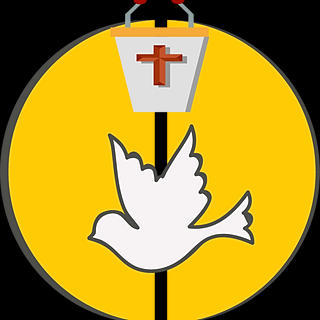September 14, Feast Of the Holy Cross
- Admin
- Sep 13, 2015
- 3 min read
The feast of the Exaltation of the Holy Cross is celebrated on 14 September. It has its origin in Jerusalem and marks the anniversary of the consecration of the basilica built by Emperor Constantine, in order to protect the holy places linked with the passion, death and resurrection by which Jesus Christ redeemed the world and brought to completion the paschal mystery of his death and resurrection. The original basilica included the Martyrium church, the rock of Golgotha and the Anastasis dome with the Edicule of the Resurrection.

This day is also linked with the finding of the Holy Cross of the Lord and with the anniversary of the consecration of the temple of Solomon. This new basilica was the occasion to create a new type of liturgy. The liturgical action of Jerusalem adapts itself and is inspired to the mystery which it celebrates and renews. That is why the feast of the Exaltation of the Cross was given great importance, and could be compared to Easter and Epiphany for the solemnity of its celebration.
Holy Land celebrated the rise of the Blessed Cross in the Galilee area, in the presence of thousands of Christian worshipers came from all over the Holy Land in order to take part in the traditional procession and pray for true peace in the world . Procession attended by 40 cardinals and bishops from all Europ who came especially to Israel in order to investigate Holy Holy Land especially discrimination Christian schools receive Israeli government and reduce the budget significantly compared with schools of Jews

If you are looking for Jerusalem Cross necklace
The origins of this festival are found in the early decades of the fourth century, when St. Helena, mother of Emperor Constantine, undertook an archeological search for the cradle of Christianity within the city of Jerusalem. That holy city had been rebuilt under the Roman Empire following its destruction in the first century (as our Lord Jesus had prophesied). While some of the details, including the precise nature and extent of St. Helena’s involvement, cannot be established with absolute certainty, there are various reliable witnesses to the basic facts of the case. The presumed sites of our Lord’s crucifixion and burial were uncovered, dug out from under the rubble of Jerusalem’s destruction and rebuilding. Tradition says that three crosses were discovered in this process, and one of these three was presumed to be the cross on which Christ Jesus Himself had been crucified. This was in September of a.d. 320. When basilicas had been erected on these holy sites and were dedicated fifteen years later, in mid-September, a.d. 335, the remnants of that “true cross” were housed within the Basilica of the Holy Sepulcher. In subsequent years those remnants of the cross were used ceremonially in annual commemoration of these several events, that is, the uncovering of the sacred sites of our Lord’s death and burial, the discovery of the cross, and the dedication of the churches.

Benefit from fantastic savings on Jerusalem Cross

A few hundred years later, after the cross had been stolen away to Persia and later recovered under Emperor Heraclius, the Feast of the Exaltation of the Holy Cross on the 14th of September celebrated its restoration as well as all of the above historical events. This was an Eastern festival, to begin with, but one that was adopted in the West in due time. In western practice, Holy Cross Day determined the autumn “ember days,” the Wednesday, Friday and Saturday following the feast, when prayers were offered for the fruits of the earth. Thus, the Cross of Christ, by which He redeemed His creation from the curse of sin and death, was raised against the approach of winter.

































Comments